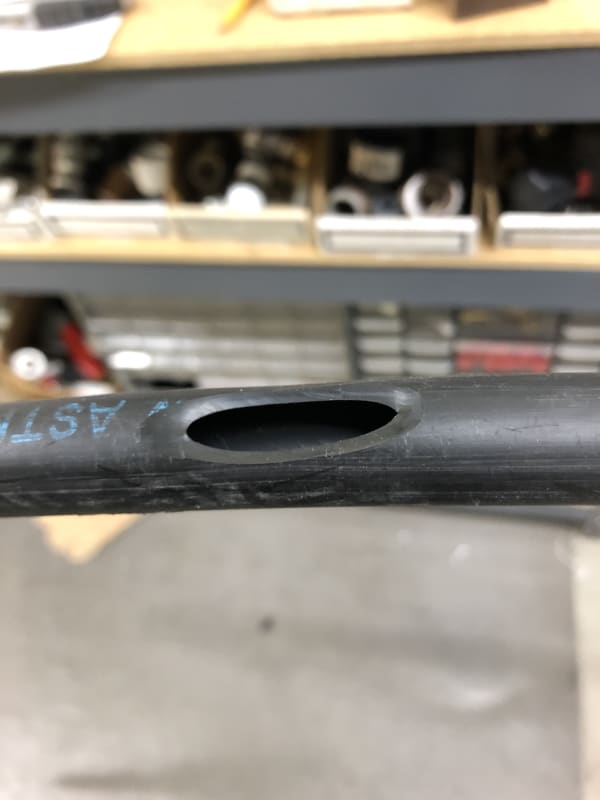Dear eng-tips community,
This will be my first post here. I've come seeking help. I recently started working for a small environmental company that installs groundwater sampling systems. A very important part of the installation process is a polyethylene pipe that is sent down the borehole and vents air so that the system is able to completely seal the hole. The trouble I am having is in cutting holes, for venting, into this pipe. My boss showed me a method that involves using a box cutter to very carefully slice a curved cut on the edge of the pipe to make small holes. He calls this scalloping. I practiced doing this on Friday and was not successful. Polyethylene is a very hard plastic. It was taking all my strength to get through it. These holes need to be precisely cut so that they make a small hole, but aren't too deep to compromise the strength of the tube. They also need to be very smooth so when the tube is pulled from the hole it does not cut anything on the way out. We also make small holes with a scratch awl, but it helps to have the bigger holes made by the knife.
I could keep practicing the boxcutter technique, but I think that there has to be a better way to do this. We tried using a drill but it makes rough edges around the holes. Our best idea is to find a better tool for cutting these holes. We came up with the idea of using something like a potato peeler that could be dragged across the edge of the pipe to make the cuts. This has the benefit of being safer, too. I don't think that tool exists and fabricating it would be a lot of work. Can anyone think of a tool that might accomplish this? or perhaps a better method for creating these holes? I can probably upload photos if that would help. I greatly appreciate your consideration and any help or thoughts. Thanks for your time.
-Flute Man
This will be my first post here. I've come seeking help. I recently started working for a small environmental company that installs groundwater sampling systems. A very important part of the installation process is a polyethylene pipe that is sent down the borehole and vents air so that the system is able to completely seal the hole. The trouble I am having is in cutting holes, for venting, into this pipe. My boss showed me a method that involves using a box cutter to very carefully slice a curved cut on the edge of the pipe to make small holes. He calls this scalloping. I practiced doing this on Friday and was not successful. Polyethylene is a very hard plastic. It was taking all my strength to get through it. These holes need to be precisely cut so that they make a small hole, but aren't too deep to compromise the strength of the tube. They also need to be very smooth so when the tube is pulled from the hole it does not cut anything on the way out. We also make small holes with a scratch awl, but it helps to have the bigger holes made by the knife.
I could keep practicing the boxcutter technique, but I think that there has to be a better way to do this. We tried using a drill but it makes rough edges around the holes. Our best idea is to find a better tool for cutting these holes. We came up with the idea of using something like a potato peeler that could be dragged across the edge of the pipe to make the cuts. This has the benefit of being safer, too. I don't think that tool exists and fabricating it would be a lot of work. Can anyone think of a tool that might accomplish this? or perhaps a better method for creating these holes? I can probably upload photos if that would help. I greatly appreciate your consideration and any help or thoughts. Thanks for your time.
-Flute Man

